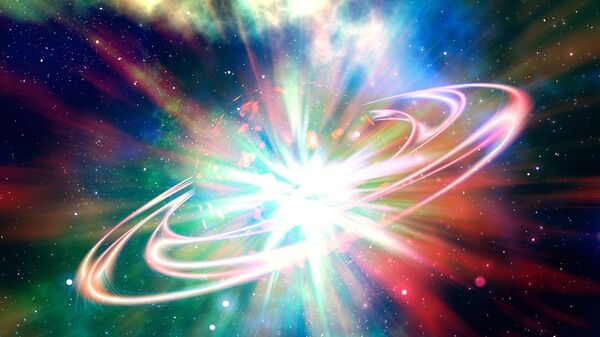Telescopes in the most remote places on Earth are scanning the sky, trying to discover the so-called neutral hydrogen signal, also known as the 21-centimetre signal, that came from the universe’s simplest and most ancient atoms 12 billion years ago, Vice reports.
“We know that neutral hydrogen is there, so the neutral hydrogen signal must also be there”, Leon Koopmans, who is the principal investigator of the LOFAR Epoch of Reionisation Key Science Project, using the namesake telescope to search for the stealthy signal, explained.
There are several teams around the globe hunting for these “messengers” from the mysterious times of the early Epoch of Reionisation (EoR) between the cosmic dark ages, bereft of starlight, and the modern-day universe with stars and galaxies. During this period of about 500 million years, the universe is thought to have been made of dark matter and dark energy that we now know materialised. Those who manage to detect and decipher signals from neutral hydrogen atoms are expected to shed light on the time and origins of the components of our universe and go down in the history of science, potentially becoming top candidates for the Nobel Prize.
However, this has not been an easy task, as the ancient signal is interfered with by galaxies, stars, nebulae, and gadgets on Earth. As Koopmans points out, the energy emitted by the ancient atoms is up to a million times fainter than other noises.
“All the energy ever collected by a radio telescope, such as LOFAR, does not exceed that of a snowflake falling on Earth. The energy emitted by the neutral hydrogen signal is still 100,000 less than that”, he said.
Although it has been decades since scientists suggested that the neutral hydrogen signal could be useful for reconstructing the so-called cosmic dawn, when objects of our universe were formed, advances in technology made it possible to pursue some 10 years ago.
Apart from LOFAR, built in 2012, with small antennae scanning the Netherlands, Germany, the UK, France, Sweden, and Ireland, there is also the Murchison Widefield Array (MWA) in the Western Australian outback that was completed in 2012. The latter shares the location with the Experiment to Detect the Global EoR Signature (EDGES).
It is said to have produced “the most promising evidence for a 21-centimetre detection so far”, as experimental cosmologist at Arizona State University Judd Bowman, who led the research, told Vice. He revealed that the next-generation version of this instrument, EDGES-3, is planned to be launched in 2020 to continue the search. In the late 2020s, the Square Kilometre Array (SKA), called the mother of all telescopes, is expected to be operational. It will become one of the biggest missions for probing the mysterious period, as it will be an intercontinental observatory, consisting of millions of radio antennae in South Africa and Australia.



